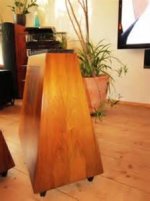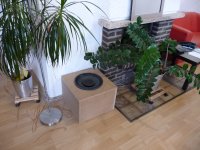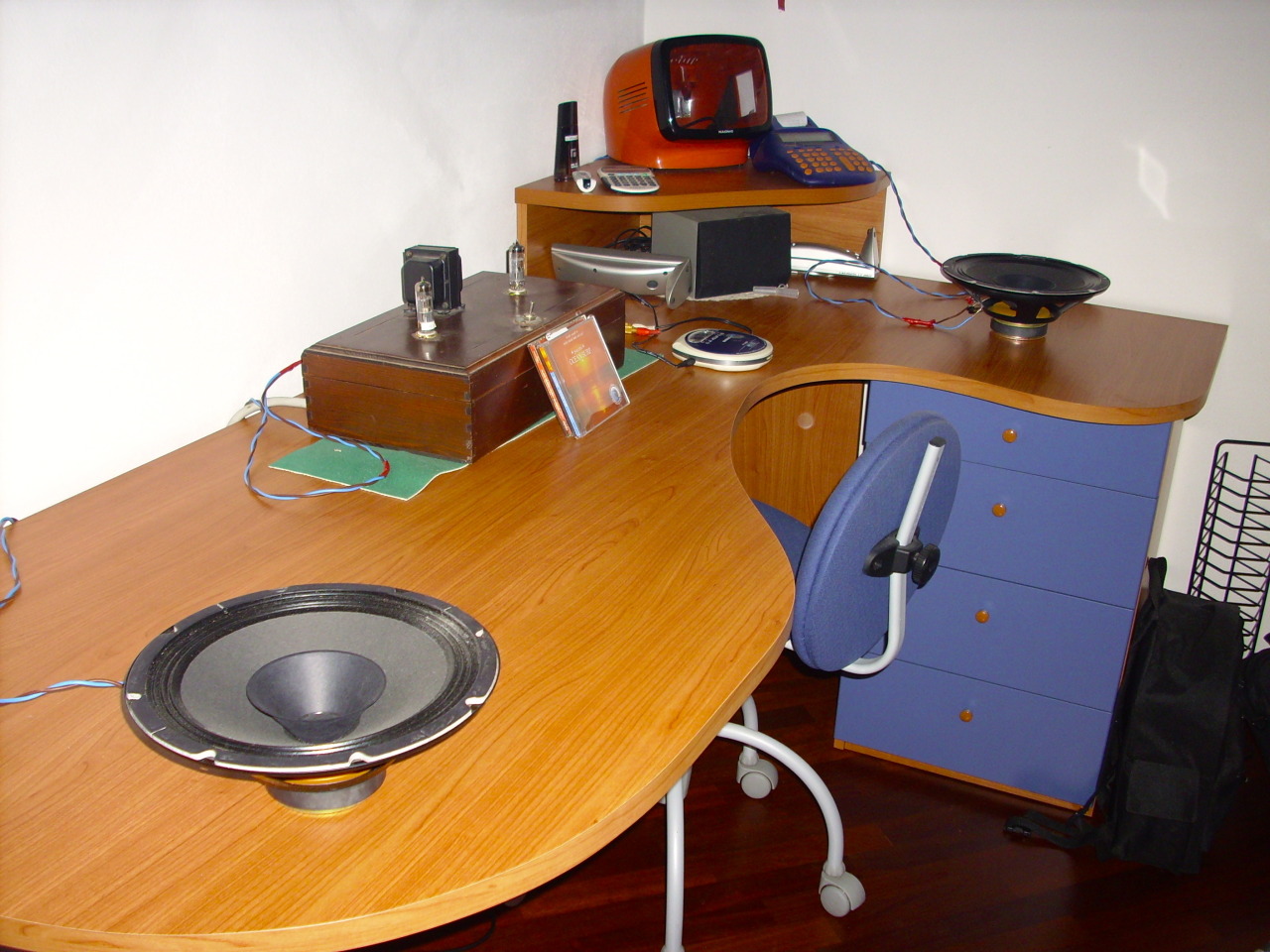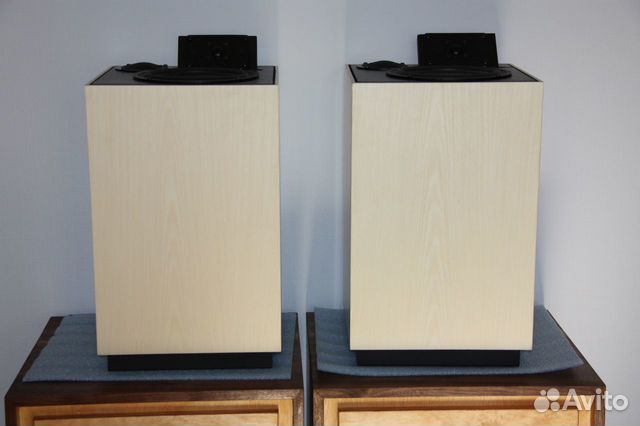here is a review of some Shahinian upfiring loudspeakers, that hasn't been posted here yet:
http://shahinianacoustics.com/HFC9_Shahinian.pdf
in it once again some typical qualities of the sound presentation are pointed out
http://shahinianacoustics.com/HFC9_Shahinian.pdf
in it once again some typical qualities of the sound presentation are pointed out
VERY interesting hybrid between direct and up-firing speakers. Very interesting. I'm going to push my DIY system in that direction. But I'm going to do it better 🙂 Have some ideas.
http://jamesromeyn.com/#/home-audio-gear/dream-maker-lcs-late-ceiling-splash-loudspeaker-system/
http://jamesromeyn.com/#/home-audio-gear/dream-maker-lcs-late-ceiling-splash-loudspeaker-system/
1. I want to use coax speaker - but that's just for keeping boxes smaller, while keeping directivity
2. I have a spare pair of outputs at my MiniDSP, so I'm going to run a seperate amp for LCS speakers and apply some additional delay for them. The other advantage is that one can adjust volume of effect speakers.
2. I have a spare pair of outputs at my MiniDSP, so I'm going to run a seperate amp for LCS speakers and apply some additional delay for them. The other advantage is that one can adjust volume of effect speakers.
Attachments
A flooder with 12" full range Monacor SP-30PATC
.
Is this a mono setup?
He is talking about a pair of enclosures in the text - building two symmetrical ones with the cable output on left and on right. Therefore i think it is stereo.

CarlssonPlanet.com • View topic - Larson Pyramids (big ones) - please help!
Never heard of this one before
I've tried that, with better mechanical isolation between driver and desk.
With some helps of EQ, it can be very good actually. Much better than those plastic boxes.
I've tried that, with better mechanical isolation between driver and desk.
With some helps of EQ, it can be very good actually. Much better than those plastic boxes.
Radugazon (and also Tinitus IIRC) tried such bare coax drivers directly on the floor in a HiFi setting
BTW - whatever happened to our dear colleague? I haven't heard from Him for a long time 🙁
just put it on the floor then You have another one:
Kibri Naima
Kibri Naima
An externally hosted image should be here but it was not working when we last tested it.
Love this article (some info regarding omnis at the bottom)
We need to talk about SPEAKERS: Sorry, 'audiophiles', only IT will break the sound barrier ? The Register
We need to talk about SPEAKERS: Sorry, 'audiophiles', only IT will break the sound barrier ? The Register
But In my loudspeakers I don't want separate tweeters. I "believe" in crossoverless designs...So I am rahter thinking of adding separate stereo subwoofers behind the main loudspeakers than of adding any kind of tweeters or midtweeters
What about a good 10" woofer (SB Acoustics SB29, SEAS L26, etc..) facing down mated at say 150-300Hz to a 3" fullrange (be it the JX92, W3-871, FF85K, etc..) facing up into the room.
Lovely looks. I just stumbled upon this thread and it is pretty long to read all of it but I always liked Walsh type loudspeakers. I think John Strohbeen's Ohm makes them now.
What about a good 10" woofer (SB Acoustics SB29, SEAS L26, etc..) facing down mated at say 150-300Hz to a 3" fullrange (be it the JX92, W3-871, FF85K, etc..) facing up into the room.
I came to believe that of the two options the better solution is a coaxial or coincident loudspeaker with tweeter, because it is more important to have a coaxial or coincident source than a source that is free from crossover induced time/phase distortions in the direct sound.
This is because I believe that what matters is not as much the time/phase fidelity of the direct sound as such as the time/phase coherence between the direct and the reflected sound. In other words - there can be some crossover induced time/phase distortions as long as the direct and reflected sound is distorted in the same way. All early reflections should preserve the shape of the initial transient that reaches the listener in the direct sound
graaf said:All early reflections should preserve the shape of the initial transient that reaches the listener in the direct sound
Hi graaf,
Happy new year !
I cannot see any evidence for your claim. I think it is diffuse reflections, which are prefereable, to introduce the least possible interference artifacts between direct sound and reflected sound.
Phase decorrelated versions of the direct sound may be radiated to larger off axis angles (or be reflected from there by using wall mounted diffusers). But the energy spectrum of the reflections should resemble that of the direct sound.
"Being equal" in the time domain is counterproductive, as it induces typical "loudspeaker in a small room" sound.
Typical artifacts are:
- Increased "loudness" impression, especially with percussion instruments.
- Restricted dynamic range for enjoyful listening
- Loudspeaker localizeable with certain program material especially at higher frequencies
(e.g.
"Identical shape" of direct and reflected singals in time domain is not necessary for summing localization and precedence effect to take place for making stereophony work as intended.
What is needed here is a statistical "close match" in the spectral domain first. This match should hold for the early and the later reflections as well.
But at the same time this match should be achieved with the highest possible phase decorrelation in occuring on a sufficiently narrowbanded level.
Kind Regards
Attachments
Last edited:
It appears Mr. Wilkinson needs to get out of the house a bit more often 🙄
He is respected in the field but I'd like to hear his Legend prototypes before unreservedly going along with him. However the DSP section is undoubtably true - you just have to hear what apparent bass you get from a smartphone or iPad.
There are some interesting articles on room/speaker interaction on this site
REGONAUDIO
What is needed here is a statistical "close match" in the spectral domain first. This match should hold for the early and the later reflections as well.
But at the same time this match should be achieved with the highest possible phase decorrelation in occuring on a sufficiently narrowbanded level.
Hi Oliver,
I tend to disagree. 🙂
To me this appears as a better and more logical requirement than yours:
The author believes that engagement, near/far, pitch perception, timbre perception, direction detection, and stream formation all derive from the same property of sound:
the phase coherence of harmonics in the vocal formant range, ~630Hz to 4000Hz
David Griesinger
Rudolf
- Home
- Loudspeakers
- Multi-Way
- The Advantages of Floor Coupled Up-Firing Speakers




